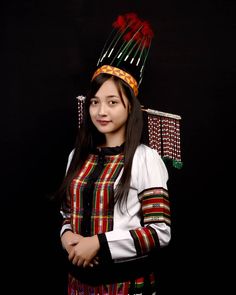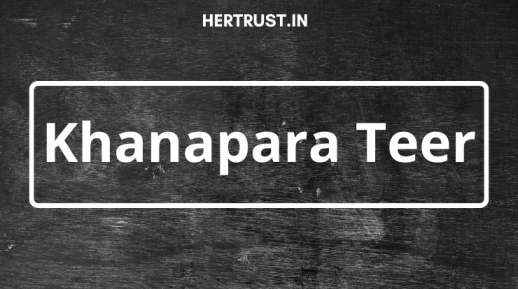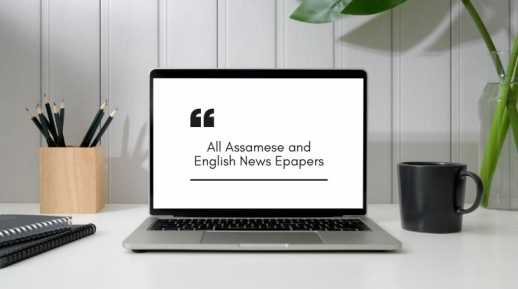THE NORTHEAST INDIA

The Graceful Mekhela Chador of Assam
The Mekhela Chador: An Emblem of Assamese Identity The Mekhela Chador is a two-piece ensemble that consists of the Mekhela, a pleated wraparound skirt, and the Chador, the Mekhela Chador is not just a garment; it is an embodiment of the region’s cultural heritage and sartorial pride.
As we immerse ourselves in the beauty of the Mekhela Chador, we are reminded of the rich cultural tapestry that adorns Northeast India. With each traditional dress, we uncover stories of identity, craftsmanship, and the interweaving of the past and present.
Assam‘s Elegant Riha & Seleng Sador
The Riha & Seleng Sador: Emblems of Assamese Grace The traditional attire of Assam, comprising the Riha and Seleng Sador, exudes a rare charm that captures the hearts of those who encounter it. These exquisite garments mirror the soulful elegance of Assamese culture, encapsulating its timeless allure.
The Graceful Riha: An Assamese Staple The Riha, a handwoven decorative cloth, drapes gracefully around the upper body. This versatile garment, adorned with intricate designs and patterns, is cherished for its delicate beauty and cultural significance.
Seleng Sador: The Allure of Assamese Silk Saree Complementing the Riha is the Seleng Sador, an assamese silk saree that celebrates femininity and sophistication. The Seleng Sador’s lustrous fabric and ornate borders showcase the masterful artistry of Assam’s silk weavers.
Nagaland’s Colorful and Dynamic Naga Shawls
The Naga Shawls: A Kaleidoscope of Colors and Designs Intricately handwoven with vivid colors and intricate patterns, Naga shawls hold a special place in the hearts of the Naga people. Each tribe boasts its unique shawl design, making these garments a visual symphony of cultural diversity.
Beyond Shawls: Unique Attire for Men and Women While Naga shawls are renowned, the traditional attire of Naga men and women comprises more than just these elegant garments. Men don the distinctive Angami or Ao loin cloth, while women wear the colorful mekhala and a sleeveless top called the vatchi. The ensemble showcases the Naga people’s creativity in fashion and their flair for blending tradition with contemporary elements.
Manipur’s Cherished Potloi & Innaphi
Potloi & Innaphi: Exquisite Manipuri Ensemble The traditional attire of Manipur comprises the Potloi, a voluminous pleated skirt, and the Innaphi, a delicately woven shawl. Together, they form an exquisite ensemble that embodies the essence of Manipuri elegance and poise.
A Fusion of Tradition and Artistry Potloi & Innaphi represent more than just garments; they are a fusion of tradition, artistry, and cultural pride. Their allure extends far beyond Manipur’s borders, captivating the hearts of those who appreciate the beauty and craftsmanship of these treasured ensembles.
Sikkim’s Exquisite Pangden & Honju
The Pangden & Honju: Weaving Stories of Sikkim The Pangden is a traditional wraparound skirt, while the Honju is an intricately embroidered blouse adorned with vibrant colors and delicate motifs. Together, they form a breathtaking ensemble that reflects the cultural heritage and customs of Sikkim.
A Kaleidoscope of Colors and Motifs Sikkim’s traditional dresses boast a kaleidoscope of colors and motifs, drawing inspiration from the region’s natural beauty and spiritual beliefs. The intricate embroidery on Honju mirrors the artistic prowess of Sikkimese craftsmen.
Nurturing the Legacy of Pangden & Honju The art of crafting Pangden & Honju is a labor of love, with artisans dedicating hours of meticulous work to each piece. The garments are often passed down through generations, cherished as family heirlooms that carry the essence of Sikkim’s heritage.
Festivals and Celebrations Adorned in Splendor During Sikkim’s vibrant festivals like Losar and Dasain, locals don the Pangden & Honju with pride and joy. The attire takes center stage in cultural performances and religious rituals, adding splendor to the celebrations.
Arunachal Pradesh’s Timeless Galo & Adi Costumes
Galo & Adi Costumes: An Artistic Tapestry of Arunachal Pradesh The traditional dresses of Arunachal Pradesh are steeped in history and meaning, embodying the essence of the region’s indigenous tribes. The Galo and Adi costumes, in particular, exude a sense of elegance and sophistication that echoes the rich cultural heritage of the land.
The Galo Costume: A Melange of Colors and Ornamentation The Galo women’s costume is a striking blend of vibrant colors and intricate ornamentation. The wraparound skirt, adorned with delicate patterns and motifs, reflects the artistic finesse of Galo weavers. The attire is complemented by a beautiful jacket, completing a regal ensemble that captivates with its splendor.
The Adi Costume: A Masterpiece of Handwoven Ingenuity The Adi costume, too, is a masterpiece of handwoven ingenuity. The women’s costume features a handwoven skirt, meticulously crafted with traditional techniques and decorated with geometric patterns. The men’s attire includes a striking cane hat and a woven jacket that showcase the tribe’s skillful craftsmanship.
As we immerse ourselves in the splendor of Arunachal Pradesh’s Galo and Adi costumes, we are awestruck by the craftsmanship and cultural significance that these ensembles represent. The cultural voyage through the top 10 traditional dresses of Northeast India continues, promising to reveal more tales of artistry, tradition, and the cherished heritage of the region.
Meghalaya’s Enchanting Jainsen & Dhara
The Jainsen & Dhara: Unveiling Meghalaya’s Unique Attire The traditional dress of Meghalaya is a seamless blend of grace and simplicity, characterized by the Jainsen, a handwoven wraparound skirt, and the Dhara, an intricately designed silk shawl. Together, they embody the essence of Khasi tradition and showcase the artistic prowess of the region’s weavers.
The Grace of Jainsen: A Symbol of Femininity The Jainsen is a symbol of femininity, adorning Khasi women with its flow and elegance. Woven with precision, the skirt showcases the skilled craftsmanship of Meghalaya’s weavers, creating a mesmerizing interplay of colors and patterns.
Dhara: The Majestic Silk Shawl The Dhara, made from exquisite silk, complements the Jainsen with its rich textures and intricate designs. The vibrant hues and motifs on the shawl reflect the region’s connection with nature and the reverence for its surroundings.
As we immerse ourselves in the allure of Meghalaya’s Jainsen and Dhara, we are entranced by the artistry and cultural significance that these garments embody. Our expedition through the top 10 traditional dresses of Northeast India continues, promising to reveal more treasures of tradition, artistry, and the enduring beauty of the region’s rich heritage.
Tripura’s Resplendent Rignai & Risa
The Rignai & Risa: A Glimpse of Tripura’s Sartorial Splendor The traditional dresses of Tripura, the Rignai, and Risa, paint a vivid picture of the region’s rich heritage and timeless beauty. These garments are not merely attires but intricate masterpieces, each weaving a story of the land’s cultural diversity.
The Grace of Rignai: Adorning Tripuri Women The Rignai, a vibrant handwoven cloth, is a quintessential part of Tripuri women’s attire. Wrapped around the waist, this colorful wrap exemplifies the grace and elegance that define the traditional beauty of Tripura.
Risa: The Elegance of Tripuri Blouse Complementing the Rignai is the Risa, an exquisitely embroidered blouse. The Risa showcases the artistry and creativity of Tripuri artisans, adorned with intricate motifs and designs that celebrate the connection between the community and nature.
As we immerse ourselves in the allure of Tripura’s Rignai and Risa, we are awe-struck by the intricate craftsmanship and the cultural significance that these garments carry. Our expedition through the top 10 traditional dresses of Northeast India continues, promising to reveal more wonders of tradition, artistry, and the cherished heritage of the region.
Mizoram’s Mesmerizing Puan & Kawrchei
The Puan & Kawrchei: A Harmonious Symphony of Mizoram’s Culture The traditional dresses of Mizoram, the Puan, and Kawrchei, weave a harmonious symphony of colors, designs, and cultural pride. These attires epitomize the essence of Mizo identity and stand as a testament to the community’s rich heritage.
The Puan: An Elegant Mizo Shawl The Puan is a beautifully woven shawl, meticulously crafted with vibrant colors and intricate patterns. Embodying the warmth and elegance of Mizo tradition, the Puan is cherished by both men and women, adorning their shoulders with grace and poise.
Kawrchei: The Embroidered Mizo Blouse Complementing the Puan is the Kawrchei, an exquisitely embroidered blouse that adds an extra layer of allure to the Mizo ensemble. The intricate designs on the Kawrchei reflect the artistic finesse of Mizo women, narrating stories of their culture and beliefs.
As we delve deeper into the allure of Mizoram’s Puan and Kawrchei, we are enthralled by the artistry and cultural significance that these garments embody. Our expedition through the top 10 traditional dresses of Northeast India continues, promising to reveal more treasures of tradition, artistry, and the cherished heritage of the region.
FAQs
Q1: What is the clothing of North Eastern India? A1: The clothing of North Eastern India is diverse and reflects the rich cultural heritage of the region. It includes traditional garments like Mekhela Chador in Assam, Naga shawls in Nagaland, Puan & Kawrchei in Mizoram, and Rignai & Risa in Tripura.
Q2: What is North East India famous for? A2: North East India is famous for its rich cultural diversity, scenic landscapes, vibrant festivals, and unique traditional dresses.
Q3: What is the beauty of North East India? A3: The beauty of North East India lies in its lush green hills, picturesque landscapes, diverse flora and fauna, and warm hospitality of its people.
Q4: What is East Indian traditional dress called? A4: The traditional dress of East India includes sarees like Taant, Baluchari, and Kantha sarees.
Q5: What is the unique culture of Northeast India? A5: The unique culture of Northeast India is characterized by diverse indigenous traditions, music, dance, and a myriad of festivals celebrated by various tribes and communities.
Q6: What is the traditional culture of Northeast India? A6: The traditional culture of Northeast India is deeply rooted in indigenous customs, music, dance, and crafts, reflecting the region’s rich heritage.
Q7: What are the textiles of North Eastern region? A7: The textiles of the North Eastern region include intricate weaves like Muga silk in Assam, Naga shawls, and various handwoven fabrics.
Q8: Which sarees are famous in North East? A8: Muga silk saree of Assam and Eri silk saree of Meghalaya are famous traditional sarees in the North East.
Q9: What is the dress of Assam called? A9: The traditional dress of Assam is called Mekhela Chador, which includes a two-piece garment.
Q10: What is the dress of Nagaland called? A10: The traditional dress of Nagaland includes colorful Naga shawls, worn by both men and women.
Q11: What is meant by Eastern dress? A11: Eastern dress refers to the traditional attire of Eastern India, like Assam, West Bengal, and Mizoram.
Q12: What is Meghalaya dress called? A12: The traditional dress of Meghalaya includes Puan & Kawrchei, a beautifully woven shawl and embroidered blouse ensemble.
Q13: What is Mizoram dress called? A13: The traditional dress of Mizoram comprises Puan & Kawrchei, reflecting the artistic brilliance and cultural richness of the region.
Q14: What is the name of Sikkim dress? A14: The traditional dress of Sikkim includes Pangden & Honju, a pleated skirt and woven shawl ensemble.
Q15: What is the dress of Tripura? A15: The traditional dress of Tripura includes Rignai & Risa, a wraparound skirt and embroidered blouse, respectively.
Q16: What is the dress of Jharkhand? A16: The traditional dress of Jharkhand varies among tribes, with some common garments being sarees and dhotis with unique tribal motifs.
Q17: What is the name of Uttarakhand dresses? A17: The traditional dresses of Uttarakhand are diverse, with women often wearing sarees and men donning dhotis and kurta.
Q18: What is the traditional dress of Arunachal Pradesh? A18: The traditional dress of Arunachal Pradesh includes Galo & Adi costumes, cherished for their tribal pride and craftsmanship.
Q19: What is Manipur wear? A19: Manipur’s traditional wear includes Potloi & Innaphi, a pleated skirt and woven shawl ensemble.
Q20: What is Madhya Pradesh costume? A20: Madhya Pradesh has a diverse culture, and traditional clothing varies among different regions and communities.
Q21: What is the traditional dress of Rajasthan? A21: The traditional dress of Rajasthan includes vibrant and colorful garments like Ghagra Choli for women and Dhoti Kurta for men.
Q22: How to wear Tripura dress? A22: The traditional dress of Tripura, Rignai & Risa, is worn by wrapping the Rignai around the waist and draping the Risa as a shawl.
Q23: What is the dress of Maharashtra? A23: The traditional dress of Maharashtra for women includes sarees like Paithani and Nauvari, while men often wear dhoti and kurta.
Q24: What is Bengal dress? A24: The traditional dress of West Bengal is the saree, with variations like Taant, Baluchari, and Kantha sarees being popular.
Q25: What is the traditional dress of Tamil Nadu? A25: The traditional dress of Tamil Nadu for women is the saree, and for men, it includes dhoti and shirt.
Q26: What is the traditional dress of Punjab? A26: The traditional dress of Punjab includes vibrant Punjabi suits for women and traditional kurta pajama for men.
Q27: Which state dress is saree? A27: The state dress of West Bengal is the saree, which is often worn during festivals and special occasions.
Q28: What is an Indian woman’s dress called? A28: An Indian woman’s dress varies across regions, but common traditional outfits include sarees, salwar kameez, and lehenga cholis.
Q29: What is dress in Islam? A29: Dress in Islam often emphasizes modesty and varies among different cultures and regions. Common garments include the hijab, abaya, or burqa for women.
Q30: What is called Western dress? A30: Western dress refers to clothing influenced by Western fashion trends, commonly worn in Western countries.
Q31: How do people dress in China? A31: Traditional Chinese clothing includes garments like the Hanfu, Qipao, and Cheongsam, representing the rich heritage of Chinese culture.
Q32: What is Khasi dress? A32: The traditional dress of the Khasi community in Meghalaya includes Jainsen for women and Dhara for men.
Q33: What is the traditional dress of Kerala? A33: The traditional dress of Kerala includes sarees like Kasavu for women and Mundu for men.
Q34: What is the traditional dress of Gujarat? A34: The traditional dress of Gujarat includes colorful garments like Chaniya Choli for women and Kediyu for men.
Q35: What is the dress of Haryana? A35: The traditional dress of Haryana for women includes sarees and suits, while men often wear dhoti and kurta.
Q36: What do girls wear in Assam? A36: Girls in Assam often wear the Mekhela Chador, a traditional two-piece garment, for special occasions and festivals.
Q37: What is the traditional dress of Kashmir? A37: The traditional dress of Kashmir includes the Phiran, a loose tunic often worn with the Pheran, a warm cloak, during winters.
Q38: What is a North East saree called? A38: The North East is known for its unique silk sarees like Muga silk saree in Assam and Eri silk saree in Meghalaya.
Q39: Which state has best sarees? A39: Various states in India produce exquisite sarees. West Bengal’s Kantha sarees, Tamil Nadu’s Kanchipuram sarees, and Odisha’s Sambalpuri sarees are some examples of renowned sarees.
Q40: Which saree is famous in North India? A40: Banarasi saree from Uttar Pradesh is famous in North India for its intricate craftsmanship and rich silk fabric.
![APDCL View Bill Receipt 23-24 [বিলৰ ৰচিদ কেনেকৈ চাব] 3 ৰোমান্টিক কবিতা](https://www.hertrust.in/wp-content/uploads/2023/11/Govt.-Job-Preprea-2-1-1.jpg)


I’ve generally struggled to find t-shirts that fit me flawlessly,
but with custom sizing, that will not be an issue anymore!Custom T Shirts with Photo
find your favourite Song Lyrics at .. https://findmyindia.com
Tulle skirts are such as a grown-up version of a tutu, and
your blush tulle skirt is radiating beauty. It’s like you’re ready for
a glamorous ballet performance! Skirts for women midi length
Hello to every single one, it’s in fact a good for me to visit this
web site, it includes helpful Information.
Somebody essentially help to make seriously posts I’d state.
That is the very first time I frequented your website page and
so far? I amazed with the research you made to make
this actual post incredible. Excellent activity!
Hello i am kavin, its my first time to commenting anyplace, when i read this paragraph i thought
i could also make comment due to this brilliant paragraph.